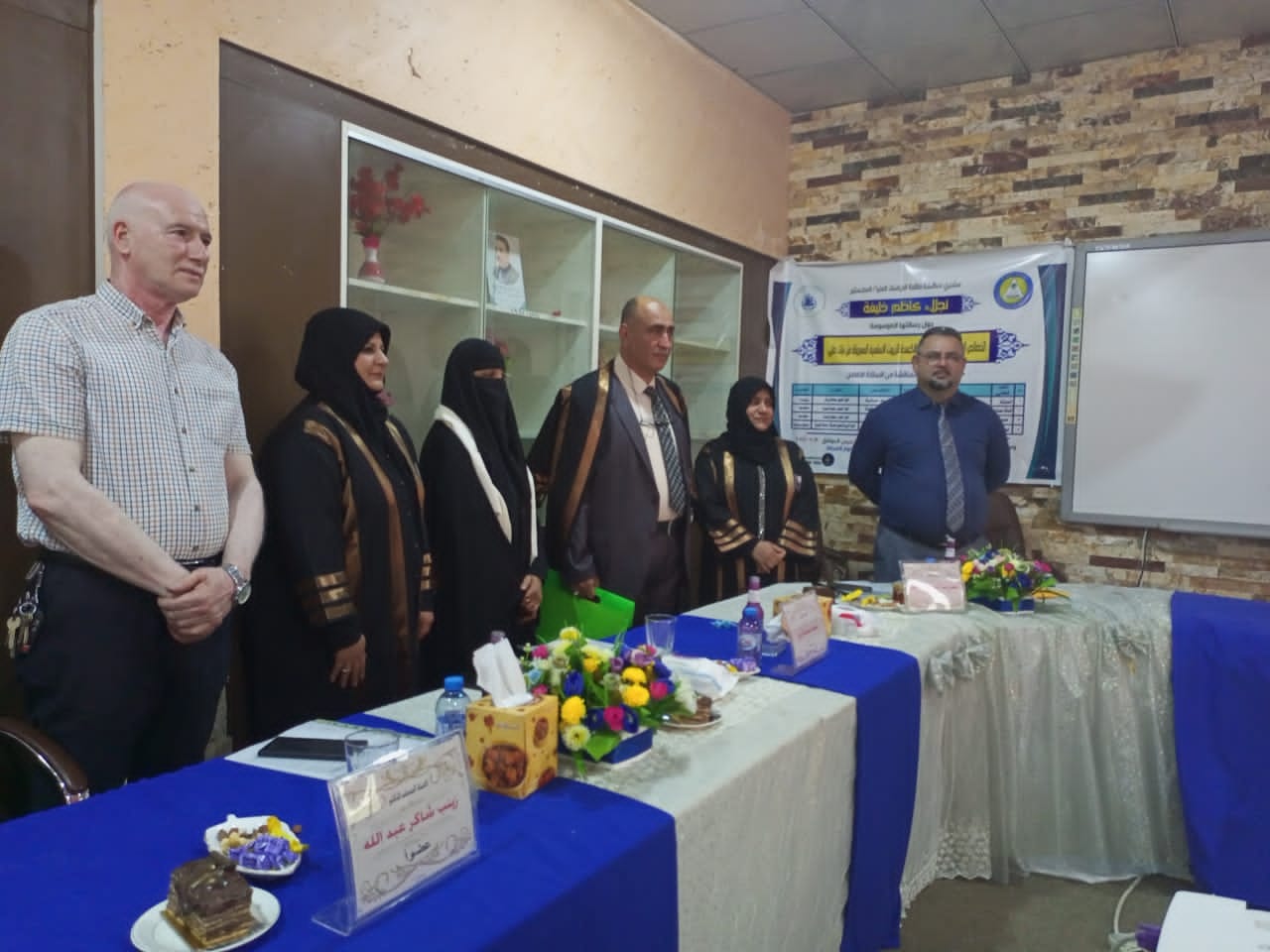
The College of Education for Pure Sciences at the University of Basra discussed the study of the anti-cancer and anti-oxidant properties of essential oils isolated from a medicinal plant.
The thesis presented by the researcher (Najla Kazem Khalifa) included the design of the current study into three parts:
Part One: The essential oils were extracted from the fruits of the fig fruit L. Ficus carica using the simple distillation method and using two types of solvents, polar (water) FW (water) and non-polar (hexane) FH (Fruit Hexan) under specific conditions for the extraction process of temperature and time. . Where the chemical compounds contained in the extracted oil for each of FW and FH were determined by GC-Mass device, and it was noted that water is more efficient in extracting oils than hexane. We observed seven major compounds known by the NIST library in FW essential oils. Among them, three compounds appeared to have the highest surface area, three peaks of Oxime-, methoxy-phenyl (RT = 9.573 minutes; area % = 2.18), 2,5-Dihydroxybenzaldehyde, (RT = 13.17 minutes area % = 1.69), benzaldehyde , 4-(dimethylamino)-2-hydroxy- (RT = 17.416 min; % area = 1.58). FW essential oils belong to the chemical classes (nitrogen, aldehyde, acid, and ketone compounds). In FH essential oils two major known compounds have been identified by the NIST library, namely Oxime-, methoxy-phenyl (RT = 9.523 min; % region = 2.25), and Phenyl -pentamethyl-disiloxane (RT = 10.42 min; % area = 2.14),. FH essential oils belong to the chemical classes (aldehydes and nitrogen compounds). The retention index (RI) of the selected compounds was determined using the Kovats method with alkanes (C6-C20) as standards.
The second part: The effectiveness of oils extracted from the fig fruit L. Ficus carica against human liver cancer cells of the type Hepatic Cancer Ahmed Majeed (HCAM) was evaluated using the MTT (methyl thiazoltetrazolium) assay to test the anti-cancer activity of the essential oils extracted from the fig fruit. Pre-screening of essential oils against HCAM cells to determine cell viability revealed that FW had a cell viability of 25%, while FH had a cell viability of 39.6%.
Part III: The carcinogenic activity of oils extracted from the fruit of the fig plant, Ficus carica, was evaluated. Through the MTT assay, the inhibitory concentration (IC50) of the isolated oils against human hepatocellular carcinoma cells was calculated using Excel, and different volumes of essential oils (10-60% vol/vol) were used to analyze the relationship with cell activity. The results showed that the IC50 value for both FW and FH was about 40% (v/v%).
The effectiveness of essential oils extracted from FW on stopping the life cycle of hepatocellular carcinoma cells (HCAM) was evaluated when treated with the half inhibitory concentration IC50 40% (v/v%) and it was found that it stops the life cycle of hepatoma cells at the S phase. DNA in the S phase increased to 34.42% compared to the control 25.41%, and a significant decrease in the content of DNA in the G1 phase to 17.05% compared to the control cells 58.64%, and its decrease in the G2 phase to 2.19% compared with the control 16.82% and the results of the treatment of liver cells were Carcinogenicity (HCAM with extracted essential oils, FH negative) could not stop the life cycle of cells when treated with IC50 40% (v/v%). It was observed that the levels of G1, S and G2 in untreated cells (control) were higher than in cells processing.
The effect of the essential oils isolated from the fig fruit Ficus carica FW and FH was studied on changing the level of ROS in hepatocellular carcinoma cells (HCAM). The results showed that the untreated cells (control) had 98.7% DCFH +, and FW had 35.4% DCFH + and FH had 86.5% DCFH +, where both FW and FH reduced the level of ROS when treated with the half inhibitory concentration IC50 40% (v/v%), and this decrease led to a decrease in live hepatocellular carcinoma (HCAM) cells with a decrease in the level of ROS.
The activity of each FW and FH in inhibiting hepatocellular carcinoma (HCAM) cells through apoptosis was studied and the percentage of cells undergoing apoptosis was calculated by flow cytometry method after staining B cells with PI and Annexin V-FITC dyes.
Matched IC50 values for FW and FH were used to determine early apoptosis (Q1), late apoptosis (Q2)), necrosis (Q3), and cell survival (Q4). The percentage of live cells (Q4) 25.7% was significantly decreased in cells treated with FH compared with FW and Control which percentage of live cells in which were 40.0% and 85.9% respectively, and the appearance of dead cells (Q3) in cells treated with high FW which reached 17.0% Compared with FH and CONTROL, in which the percentage of dead cells was 6.88% and 2.49%, respectively, the emergence of late programmed death (Q2) with a higher rate of 30.2% FW compared to FH and CONTROL where it was 24.3% and 2.44%, respectively, and the emergence of early programmed death is noted (Q1) For cells treated with FH higher up to 43.1% compared to FW and control in which early apoptosis was 12.7 and 9.16%, respectively, the effect of FW and FH on DNA fragmentation was studied.
The results of treating HCAM cells with FH showed DNA necrosis, while treatment of cells with FW oil showed a result equal to that of control. This indicates that FH exerted its effect on the treated cells by necrosis, while FW had no effect on DNA fragmentation. According to these results, the essential oils extracted with FW water were more effective than the essential oils extracted with hexane FH on liver cancer cells. HCAM.








